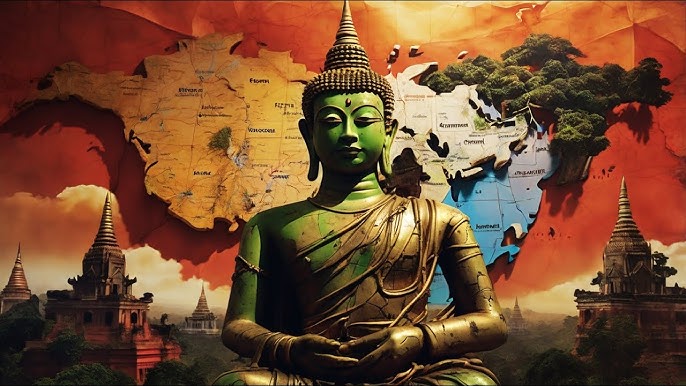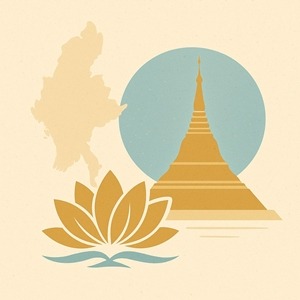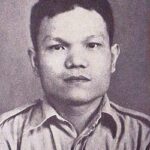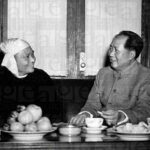
Myanmar, known as Burma until 1989, has a rich and complex history shaped by various kingdoms, colonial powers, and struggles for independence. Here’s a quick overview of its history:
Ancient Kingdoms and Early Civilizations (circa 1st century CE – 11th century)
Pyu Kingdoms: The earliest recorded civilization in Myanmar, the Pyu people, established city-states between the 1st and 9th centuries CE. These early states flourished through trade with India, China, and Southeast Asia.
Mon Kingdoms: The Mon people, originating from the region around the Gulf of Martaban, established kingdoms in southern Myanmar, including the city of Thaton (around the 9th century). They introduced Theravada Buddhism to the region, which would later become a key element of Myanmar’s culture.
The Pagan Empire (11th – 13th century)
King Anawrahta (1044–1077): The founder of the Pagan (or Bagan) Empire, Anawrahta unified much of modern-day Myanmar and adopted Theravada Buddhism as the state religion. The empire saw the construction of thousands of temples in Bagan, which remain some of Myanmar’s most iconic landmarks.
Decline of Pagan: The Pagan Empire weakened in the late 13th century due to internal strife and external Mongol invasions, leading to its fall by the 13th century.
Ming and Early Colonial Period (14th – 19th century)
Shan States and Taungoo Kingdom: After the fall of Pagan, Myanmar fragmented into smaller kingdoms, including the Shan States in the east. The Taungoo Kingdom emerged in the 16th century, briefly uniting the region under King Bayinnaung, who expanded the empire into Thailand, Laos, and Cambodia.
Konbaung Dynasty: In the 18th century, the Konbaung Dynasty emerged in the north, led by King Alaungpaya (1752–1760), and successfully unified Myanmar once again. The dynasty fought off British colonial attempts, particularly during the Anglo-Burmese Wars.
British Colonial Period (19th century – 1948)
The Anglo-Burmese Wars: Between 1824 and 1886, three Anglo-Burmese Wars resulted in Burma becoming a British colony. The British annexed the country after defeating the Konbaung Dynasty in the Third Anglo-Burmese War (1885). The annexation led to economic exploitation, ethnic divisions, and political unrest.
Colonial Rule: Under British rule, Burma was initially part of British India before being fully incorporated as a separate colony in 1937. British control brought modern infrastructure but also sparked nationalist movements.
World War II and Independence Movement (1940s)
Japanese Occupation: During World War II, Myanmar was occupied by Japan from 1942 to 1945. The Burmese independence movement initially cooperated with the Japanese but turned against them as their brutal occupation became apparent.
Independence: After Japan’s defeat, Burma gained independence from Britain on January 4, 1948, under the leadership of U Nu, becoming the Union of Burma. However, ethnic minorities such as the Karen, Kachin, and Shan continued to resist, leading to internal conflicts.
Military Rule and the Struggle for Democracy (1960s – 2000s)
Military Coup (1962): In 1962, General Ne Win led a military coup that overthrew the civilian government. He established a military dictatorship and implemented socialist policies, which led to economic decline and isolation.
1988 Uprising: In 1988, a pro-democracy uprising was brutally crushed by the military, resulting in thousands of deaths. Despite this, the military government continued its rule, renaming the country Myanmar in 1989.
The 1990 Elections: The National League for Democracy (NLD), led by Aung San Suu Kyi, won a landslide victory in 1990 elections, but the military refused to hand over power, continuing its oppressive rule.
Recent History and Political Change (2000s – Present)
2000s Political Repression: The 2000s saw continued repression, with widespread poverty and human rights abuses, particularly against ethnic minorities like the Rohingya Muslims.
Transition to Semi-Democracy (2011): In 2011, the military junta formally handed over power to a quasi-civilian government, allowing for some political freedoms and economic reforms. Aung San Suu Kyi was released from house arrest and became a key figure in Myanmar’s government.
2015 Elections: Myanmar held its first truly free election in 2015, with the NLD winning a majority. Aung San Suu Kyi became the de facto leader of the country, though the military still retained significant power through a constitution that guaranteed a quarter of parliamentary seats.
Military Coup (2021): On February 1, 2021, the military once again staged a coup, overthrowing the elected government of Aung San Suu Kyi, arresting her and other NLD leaders, and sparking widespread protests and civil disobedience. This led to a brutal crackdown by the military, with thousands of deaths and widespread civil unrest.
Conclusion
Myanmar’s history is marked by cycles of unity and division, with periods of impressive cultural and political achievements, but also cycles of conflict and military rule. Today, the country remains in a state of turmoil, with ongoing struggles for democracy, human rights, and peace. Despite its challenges, Myanmar’s rich cultural heritage and resilient people continue to shape its future.



